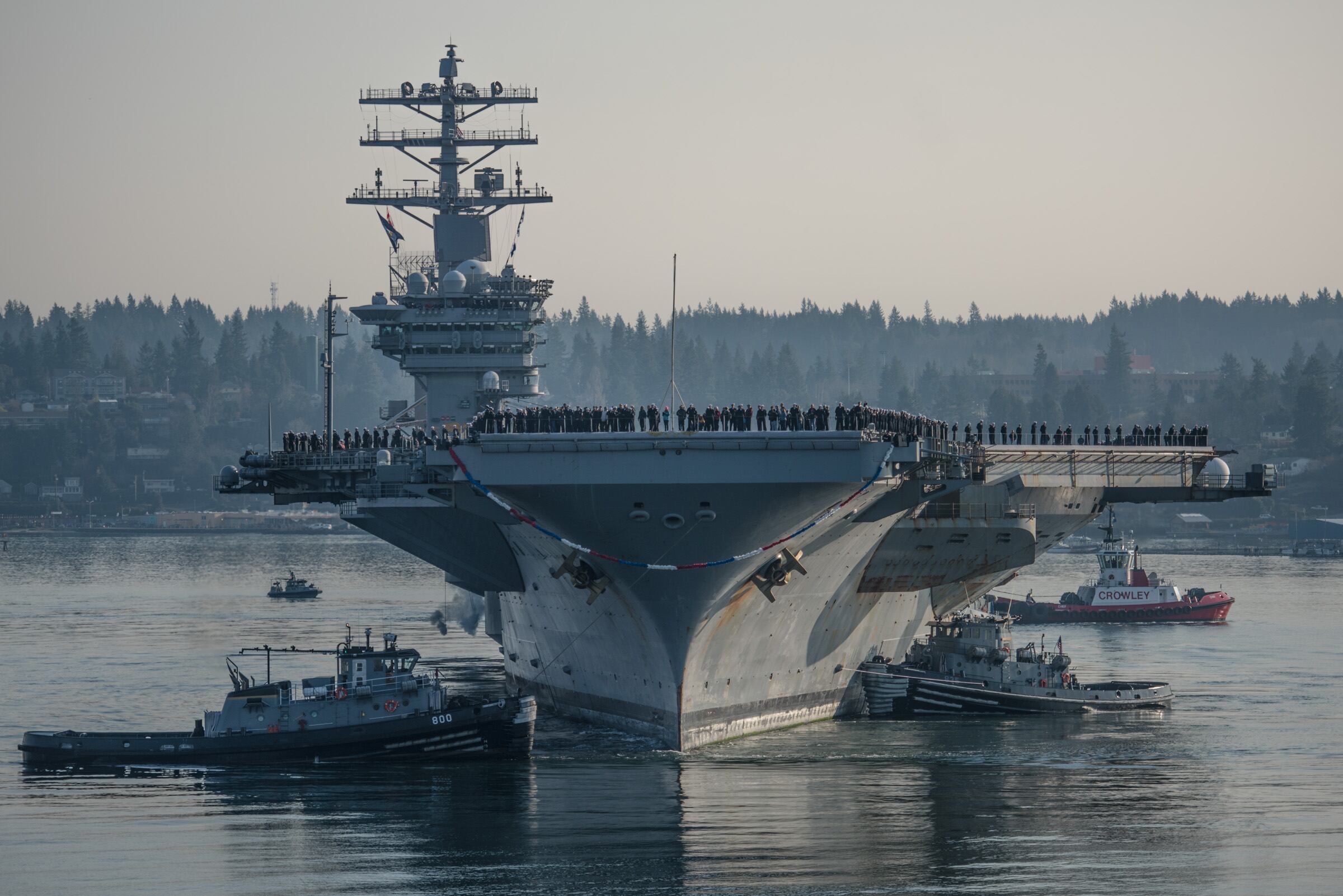PARIS – The U.S. is woefully short of ships and even the Navy’s target goal of 355 ships is well short of what the country needs to prepare for two simultaneous major conflicts and maintain its rotational presence requirements with excess capacity for surge operations and combat casualties.
That is the major finding of a new study from the conservative think tank The Heritage Foundation, an organization prominent in the Trump era because of its knack for influencing administration policy.
The study calls for a force of 400 ships, 40 percent larger than today’s force, and an increase of about 12 percent over the Navy’s current 30-year shipbuilding plan. The plan would require another $4 to $6 billion annually in the shipbuilding budget to get to 400 ships by 2039, the study estimates.
The study, conducted and written by Thomas Callender, a retired submarine officer and analyst at Heritage, acknowledges the difficulty of achieving a 400-ship fleet under budget constraints and with a limited industrial capacity in the U.S. But, Callender said, the study was based solely on current demands on the fleet, as well as the National Security Strategy and what Defense Secretary Jim Mattis has laid out in the National Defense Strategy.
“My analysis was strictly based on requirements to fight and win two major regional conflicts as well as some additional stated requirements for certain ship classes,” Callender said. “I acknowledge that this will mean a significant increase in the Navy’s shipbuilding budget – about $4-6 billion above the Navy’s long-range shipbuilding plan.”
RELATED

All ships great and small
The study calls for several big increases over the Navy’s current 30-year shipbuilding plan, including a 13th aircraft carrier, 19 new small surface combatants, seven new amphibious ships and a full 22 more combat logistics ships.
The plan calls for only minor adjustments to the large surface combatant and attack submarine numbers.
The big jump in small surface combatants is aimed at having enough ships to support a 13-carrier Navy, support 12 littoral combat ships configured as mine hunters, and have excess capacity to escort logistics ships.
The increase of 22 combat logistics ships is driven by Navy concepts of operations that are moving to an increasingly distributed force that will require support for smaller elements of Navy ships such as far-flung surface action groups, for example.
“While a 400-ship Navy is expensive to build, the nation needs a larger and more capable Navy to deter our adversaries and prevent war,” Callender said. “If our Navy is too small to deter great power adversaries such as China or Russia in the future, the cost for fight and hopefully win that war will greater exceed the monetary cost to build a 400-ship navy.
“Additionally, the nation will see the loss of ships and sailors in numbers we have not seen since World War II. It is my hope that we find the national will to fund the 400-ship navy the nation needs and deter a great power conflict.”
David B. Larter was the naval warfare reporter for Defense News.






